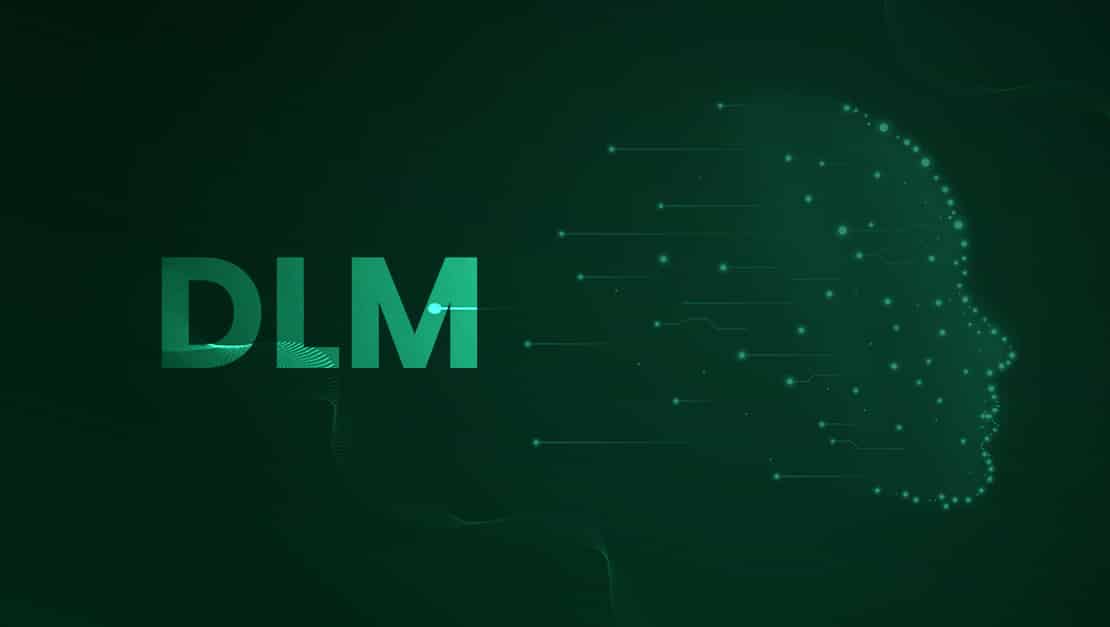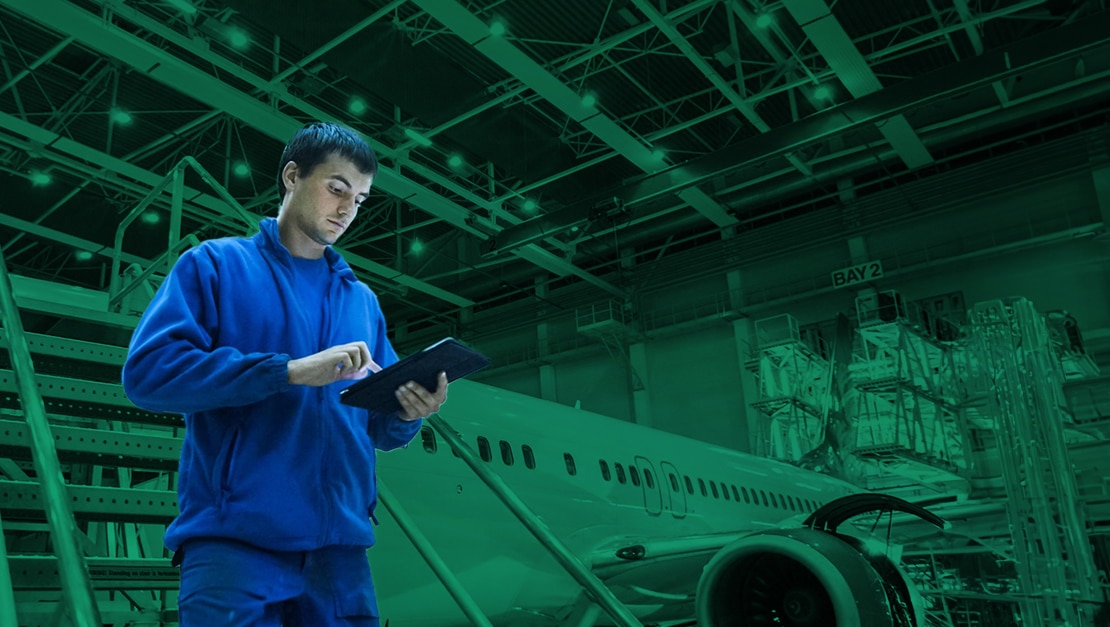It’s been the era of large language models (LLM). LLM models like GPT, BERT, LlaMA, BARD, and many others have led to a remarkable transformation in the way humans interact with technology. This transformation has led to altered and improved work processes and automations, making our work easier and in some cases, better.
However, underneath the glitz and glamor of new and exciting tools like LLMs, there are some inherent limitations: LLMs are often too general to understand the industry-specific language of specialized domains. In order to be relevant for these specialized fields, the artificial intelligence (AI) driving these LLMs needs to be drastically refined.
That’s where domain language models (DLM) come in. DLM represents a pivot towards domain-specific applications of AI, offering a more focused language understanding appropriate for industry-specific contexts like security, food manufacturing, healthcare, and beyond.
In this blog post, we’ll dive deeper into DLMs to shed light on their role in a world enthralled with LLMs. We’ll also look at how and why certain industries should transition from LLMs to DLMs, and explain how aiOla’s speech-powered AI technology is paving the way for emerging DLM technology.
Large Language Models: A Brief Overview
LLMs are trained on massive amounts of text data and use that collected knowledge to emulate human language. LLMs like GPT-3 gained notoriety for their capacity to produce outcomes with human-like qualities, leading to global hype about the technology’s current and future abilities.
Everything from chatbots and virtual assistants to AI-generated articles, code, and even art has contributed to the buzz around this technology. That said, the hype has been met with equal parts hesitation and skepticism as LLM-generated content leads to certain ethical concerns surrounding the AI’s trustworthiness, biases, privacy concerns, “hallucinations,” or even certain harmful use cases.
Aside from the ethical concerns, LLMs aren’t always reliable. In fact, studies have shown that OpenAI’s ChatGPT large language model has actually gotten less accurate over time. If businesses are relying on these LLMs for their workflows or apps built on top of them, this can create potential problems down the road, such as misinformation that leads to a damaged reputation. For some workflows, adopting a domain language model instead could be the answer.
Transitioning to Domain Language Models (DLM)
Watch the full podcast here.
Domain language models are fine-tuned to a particular area or subject. Unlike LLMs, they’re not as general in their results, although they’re still trained on a wide range of data. That said, DLMs go deeper into a specific industry in order to understand a topic and its related jargon more completely. This allows DLMs to be more tailored to a defined industry or topic, resulting in more targeted and accurate outputs.
For this reason, AI platforms like ours at aiOla are transitioning from large language models to domain-specific ones, to provide our customers a more accurate speech understanding to complete their operations. After considering the limitations of LLMs and assessing the needs of our customers, we understood that DLMs provided us with a path forward to creating a speech-based system that could be implemented in meaningful ways. By narrowing our focus and pioneering a domain language model that understands industry jargon, aiOla users are able to reap the benefits without worrying about inaccuracy, a lack of targeted knowledge, or misinformation.
The Benefits of a Domain Language Model
When compared to a large language model, domain-specific models can outperform platforms like GPT when it comes to tasks within their field. By focusing on a specific industry or topic, the results of a DLM are often more accurate and relevant, leading to more high-level applications of a DLM platform. For example, a study has shown that pre-training biomedicine natural language processing (NLP) models using domain-specific language rather than starting with general-domain language yielded better results.
Aside from higher accuracy, DLMs come with a number of other benefits, such as:
- Domain specificity: DLMs are trained primarily on data relevant to a specific domain. For example, an aviation DLM uses research papers, textbooks and instruction manuals, or aviation-related articles and documents to generate relevant content.
- Jargon specific: When trained on industry-specific content, the jargon in outputs is similar to the domains they serve. Instead of generating content based on general language, the focus is more narrow to include industry-specific jargon, which often accounts for 50% of language used in workflows and processes.
- Narrower scope: While LLMs are trained to be versatile and all-encompassing, DLMs are the opposite. They take a narrower approach to focus on one area or a few closely related ones, making them more effective for domain-specific applications.
- Customization: By narrowing down the scope and training material of a language model and aligning it with the nuances of a specific domain, it can be easily customized to suit industry-specific applications.
How aiOla Develops Domain Language Models
LLMs are so successful because they bring AI to the everyday user in a way that’s intuitive and easy to use. What aiOla does to create language models focused on specific domains is to do a deep dive into a specific vertical and train an LLM on that model.
This is done by limiting the LLM to ensure the data it receives and outputs is specific and correct. DLMs are then able to understand general language but also vertical-specific language. aiOla trains these models by constantly shrinking an LLM to a specific vertical and individual flows. By limiting LLMs to particular verticals, we can ensure that the answers it provides are more constrained. At this point, we can train the LLM models to provide the information we need in a designated field.
In this process, aiOla relies on both Automatic Speech Recognition (ASR) and Natural Language Understanding (NLU). ASR represents the understanding and connection between words and their meanings. Then, with NLU, users can extract the information they’re looking for so that the language model can trigger events and complete workflows. At aiOla, all the generated data is already labeled, making the process of building new DLMs automatic and much more time-efficient.
Real-world examples
To better illustrate the difference a DLM can make in a real company, let’s take a look at an aiOla client who managed to decrease their inspection time by a whopping 92%.
A Fortune 50 shipping and logistics company reached out to aiOla for the automation of pre-delivery truck inspections. With our DLM technology, we created an automation process within hours, effectively understanding the company’s unique terminology and jargon. After providing us with their current inspection process, we swiftly implemented speech activation to help cut down on time and make the workflow more efficient.
As a result, the company implemented speech-activated inspections, which reduced the time needed for truck inspections per vehicle from around 12 minutes to just 60 seconds. This allowed drivers and inspectors to work more efficiently while getting greater accuracy in inspection results, representing the type of ROI that aiOla’s DLM technology can provide.
Challenges to Consider With Domain Language Models
While DLMs offer significant advantages for specialized applications, they also aren’t without their challenges. In order to build reliable platforms, it’s important to be aware of the challenges in order to overcome them. Some of these challenges include:
- Data availability: It can be a challenge to gather enough high-quality data specific to a single domain, especially in fields where data is outdated or limited.
- Managing complexity: DLMs are a lot more complex since they need to be fine-tuned, and this process can be both complex and time-consuming since it requires expertise in natural language processing and machine learning.
- Relevance: As a field changes and develops over time, DLMs risk becoming less effective. Remaining up-to-date with new and relevant data requires an ongoing effort for data collection.
- Integration: Integrating a DLM into existing systems or workflows can be a challenge. It needs to work seamlessly with other databases and technologies in order to be effective.
- Cost: The cost involved in building and maintaining custom DLMs can be high, especially when models need to be specifically trained with domain-specific data and maintained on a regular basis.
At aiOla, our speech-based platform allows us to bypass most of these challenges. Since aiOla uses speech as the primary source of data, it’s not difficult to integrate with existing systems. Additionally, the system learns through speech, so new jargon or processes get picked up as you work.
Looking Ahead to the Future of Domain Language Models
Like LLMs, it’s to be expected that domain-specific language models will only grow and become more reliable and innovative as they continue to evolve. Here are some predictions for what DLMs might look like in the not-too-distant future:
- It’s likely that we’ll see language models become even more granular to cater to different industries such as energy, sustainability, law, healthcare, education, and more.
- At the same time, we can expect to see more interdisciplinary applications where DLMs can be used to bridge the gaps between different fields and facilitate cross-disciplinary research.
- As the technology improves, DLMs will require less training and become more easily adaptable to new tasks.
- New developments in DLM technology will help make it more ethical by reducing biases and ensuring a fair and responsible user experience in more and more domains.
Overall, we expect DLMs to continue to bring different industries tailored AI solutions that are capable of serving targeted use cases and revolutionizing the way knowledge is used and applied.
Building the Future of Industry-Specific AI with aiOla
The hype surrounding LLMs has led to countless new developments in AI technology that have enabled models to become more targeted and vertical-specific. At aiOla, we’re focused on building DLMs to help usher in the future of targeted AI models that cater to specific industries so that the data these models provide are more accurate and concentrated.
If you’re curious to learn more about how DLMs work in practice, book a demo and we’ll show you how it can improve your business processes.








